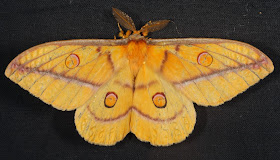Remember to click on the photos to enlarge
Members of the insect order Strepsiptera are frequently collected by entomologists but few recognise them for what they are. These insects are internal parasites of a variety of insect orders. Most have complex life histories. First instar nymphs are free-living and look nothing like either parent. Females are obligate internal parasites of their hosts in all but one family whilst males are free-living for a very brief period during which they find the female, mate and then die.
Members of the insect order Strepsiptera are frequently collected by entomologists but few recognise them for what they are. These insects are internal parasites of a variety of insect orders. Most have complex life histories. First instar nymphs are free-living and look nothing like either parent. Females are obligate internal parasites of their hosts in all but one family whilst males are free-living for a very brief period during which they find the female, mate and then die.
Females often appear as a dark spot on the abdomen of the host. This can easily be overlooked as a wound or other imperfection by casual collectors.
Strepsiptera are believed to be most closely related to the beetles. The fore wings of male strepsipterans are reduced and the hind wings are expanded for flying. This is similar in some respects to beetles of the family Rhipiphoridae.
Members of the order Strepsiptera are often called "stylops". This is a bit of a misnomer because the Stylopidae is only one of several families in the order. Insects that are parasitised by strepsipterans are said to be "stylopised" to add further confusion.
Some 30 species of Strepsiptera have been described from Australia. They are parasites of a fairly broad range of insects. Silverfish, orthopteroid insects, bugs, flies, bees and wasps are known hosts. They have been studied extensively by J. Kathirithamby and her colleagues.
Recently my friend Graeme Cocks discovered a male "stylops" in one of his Malaise traps. His photos are of such excellence that they prompted this blog.
G Cocks photo
G Cocks photo
This appears to be a species in the family Corioxenidae, subfamily Corioxeninae. These insects are parasites of bugs (Heteroptera).
The forewings are the dark twisted structures just behind the eyes. Both the eyes and the thickened grey antennae are peculiar and are probably involved with host-finding. Males have only a few hours to find their mates in some species.
A few days later while collecting and photographing insects on Mt Baldy, near Atherton, Queensland I found a female Cone-headed Katydid, Pseudorhynchus sp., with the tell tale dark mark of a stylops on its abdomen.
Pseudorhynchus sp., female
dark spot of a stylopised insect
Dissection of the abdomen of the katydid revealed that its eggs were intact seemingly unaffected by the parasite. The sac-like abdomen of the parasite was tightly affixed to the hosts abdominal wall where it did not seem to interfere with any bodily function of the host. If so, this is quite different from some of the examples of other hosts. Behaviour, structure and sexuality can be severely changed in certain bugs, for example. The only "odd" aspect of the katydid was that it is slightly smaller than I would have expected from a female of its species.
From what I can tell, this is a very different species from the male Graeme photographed. It seems to be a member of the family Halictophagidae.
What you see is the opening called the brood passage, the mandible, maxilla and probably the antenna of the female. Males fertilise females through the brood passage.
Katydid's abdomen opened to expose the entire female "stylops".
The Strepsiptera are an unusual group of highly modified insects. Their morphology and biology have been relatively well-studied compared to many other insect groups.
I am grateful to Graeme Cocks for allowing me to use his excellent photos of the male he found in his trap.















































































